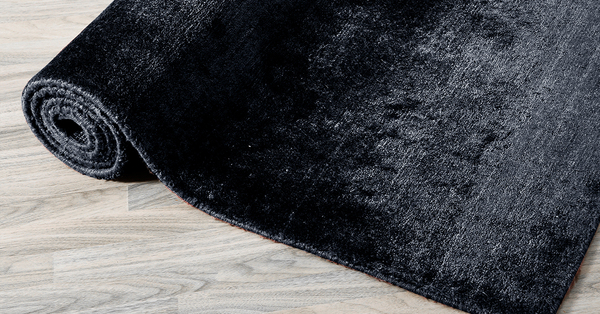Carpet density is how closely the fibers are weaved in making a carpet. People often get confused, thinking carpet density is the same as carpet face weight, and however, they are completely different concepts. Carpet face weight is the weight of the fibers used per square yard, measured in ounces.
The higher the density, the more durable and appealing the carpet is. Carpets with high densities feel plusher underfoot and hold up better to normal household conditions. The ideal carpet density is around 3,000 pounds per square foot, while extra heavy traffic conditions call for a minimum density of 5,000 pounds per square foot. Luxury area rugs are generally of high quality with appropriate carpet density. Read on to find out more. But before you buy a new carpet, remember to consider the density of the one you're considering.
Fiber density
The higher the fiber density, the more durable the carpet will be and closer to being into the category of a luxury area rug. Face weight can be measured by stretching the carpet fiber backward. Generally, a carpet with an average face weight should have 35 ounces of fiber per square yard. Density is also related to the amount of tufting in the carpet. Denser fibers are easier to clean, and the higher the density, the better.
For maximum durability and plushness, you need a carpet with a higher density than a lower-density carpet. A higher density carpet will stand up better to normal household traffic. A carpet with a higher density should be used in high-traffic areas, especially around doorways and main thoroughfares. However, the density does not necessarily translate to quality. For example, a carpet with an average density of 3,000 square feet should be of higher quality than a carpet with a lower density.
Calculating carpet density
You may find out carpet density using the mathematics below:
- Multiply the carpet face weight by 36
- Divide the result by the pile height
- The resultant will be equal to the carpet density and in ounces per cubic yard
The pile height or the density of your carpet can have a huge impact on the overall quality of your rug. This important characteristic will help you determine the carpet's durability and longevity. The ideal carpet density should be a minimum of 50 ounces per square yard as in most luxury area rugs. However, this number is only one factor to consider when buying a new carpet. Other important factors to consider are face weight and twist. By selecting a carpet with the right density, you will be able to achieve the best results and maintain the life of your carpet.
If you have kids or pets, you will want to consider choosing a low-pile carpet. These types of carpets are easier to maintain, as crumbs and dust are more easily swept away. Long-pile shaggy area rugs are luxurious, but they can also cause indentations in the furniture. This is especially important if you regularly entertain guests. Also, consider where you will be placing your carpet in your home.
Other factors that determine carpet quality
Carpet density alone would not suggest the overall quality of the carpet. Other considerations you must take care of include twist rating, fiber density, and preferred cushion thickness.
Tuft twist rating
In addition to pile height, another important factor affecting a carpet's durability is tuft twist. The tuft twist rating is a measure of how many twists are in a linear inch of the weave. The higher the number, the longer the tufts will last and retain their like-new appearance. In contrast, a lower tuft twist rating is likely to "blossom," making them less durable and appearing worn out sooner. However, it is unlikely that you will find a low tuft twist rating in luxury area rugs that are made to excel in quality.
The higher the tuft twist rating, the less chance of a carpet being crushed or matting. However, while the tuft twist rating is an important factor for durability, it is not always easily visible on a sample. As a rule of thumb, choose a carpet with a pile height under 3/4" to reduce the risk of crushing or matting.
Thickness
The thickness of a carpet is an important factor when selecting one for your home. Depending on your specific needs, thicker carpets are generally sturdier than thin ones. For instance, if you want to replace your existing linoleum floor with a new one, you must first decide on the padding thickness. However, luxury area rugs on www.matthebasics.com are thick and sturdy and do not need a rug pad. The thickness of a carpet should not obstruct the door from opening and closing freely.
The face weight of the carpet is another consideration. The higher the face weight, the denser the carpet and the more expensive it is. It's like looking for a higher thread count in bedding.
Cushion thickness
What is the ideal cushion thickness for a carpet? There are a few different factors that should be taken into account when choosing a cushion thickness. A good cushion should likely be at least 8 pounds per cubic foot to help keep the room warm and save on energy costs. Alternatively, a good shaggy area rug having considerable pile height and soft texture will serve the purpose.
The ideal cushion thickness for a carpet depends on the type of cushion material. Carpet cushion material consists of polyurethane foam, fiber, or rubber. It comes in various styles and constructions. Different cushion thicknesses are needed for different traffic areas. Thickness can be appropriate for bedrooms, dens, and lounge areas. Thinner cushions are needed for high-traffic areas. Using the right carpet cushion thickness can help extend the life of the carpet.




